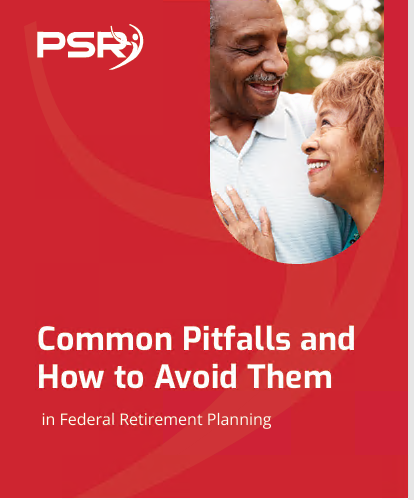Key Takeaways
- Your TSP strategy can make a significant difference in your retirement comfort—smart management now helps you get the most from your savings.
- Knowing when and how to adjust your TSP investments according to your retirement timeline can reduce risks and help meet your goals.
Maximizing Your TSP for a Better Retirement
The Thrift Savings Plan (TSP) is one of the most valuable tools federal employees have for retirement savings. A well-planned TSP strategy can make a big difference, helping you reach a more comfortable retirement and ensuring you can maintain your lifestyle in retirement. So, let’s dive into the key ways to manage your TSP for success.
1. Understand Your Investment Options
One of the first steps to managing your TSP effectively is understanding the different types of funds available. The TSP offers five core funds and Lifecycle (L) funds, which mix these core options based on your target retirement date. Here’s a quick breakdown of each:
- G Fund: Government Securities—offers stability but lower returns.
- F Fund: Fixed Income Index—bonds that provide moderate growth with more risk than the G Fund.
- C Fund: Common Stock Index—invests in large U.S. companies and can provide substantial growth.
- S Fund: Small-Cap Stock Index—invests in smaller companies and can lead to higher gains but with more volatility.
- I Fund: International Stock Index—exposure to non-U.S. markets for diversification.
By understanding each fund’s purpose and level of risk, you’ll be better prepared to mix them according to your financial goals.
2. Start with Your Timeline in Mind
Your time horizon to retirement is essential to deciding how aggressively or conservatively to invest. In general:
-
Early Career (20-35 years from retirement): At this stage, you may want to prioritize growth by investing more heavily in the C, S, and I Funds. With many years before retirement, you have time to weather the market’s ups and downs.
-
Mid-Career (10-20 years from retirement): As retirement nears, consider shifting a portion of your TSP balance into the more stable G and F Funds. This strategy can help reduce exposure to riskier investments while still benefiting from growth.
-
Late Career (5-10 years from retirement): As you get close to retirement, focusing more on the G Fund or even considering a Lifecycle (L) fund with a target date close to your retirement can help protect your TSP savings from sudden market swings.
3. Maximize Your Contributions
It’s not just about how you invest but also about how much you contribute. In 2024, the TSP contribution limit is $23,000, with an additional catch-up limit of $7,500 for employees aged 50 or older. Aim to contribute at least enough to capture the government’s matching contributions, which add up significantly over time.
The SECURE 2.0 Act has also introduced increased catch-up limits for those aged 60-63 beginning in 2025. Keeping track of these changes ensures you take full advantage of available contribution opportunities.
4. Rebalance Regularly to Stay on Track
Rebalancing is the process of adjusting your TSP fund allocations to match your investment goals, which may change as you approach retirement. Typically, rebalancing annually or semi-annually can help ensure your portfolio doesn’t stray too far from your desired risk level.
For instance, if a strong market causes your C and S Funds to grow faster than your G or F Funds, your portfolio could become overly risky. By rebalancing, you’ll sell some of the outperforming funds and move the balance into more stable options, keeping your portfolio aligned with your strategy.
5. Leverage Lifecycle Funds for Simplicity
If managing each fund individually sounds overwhelming, Lifecycle (L) Funds can help. These funds automatically adjust your investment mix based on your expected retirement date. As you near retirement, L Funds shift toward more conservative investments, reducing the need for manual adjustments. They’re a hands-off option for those who want a diversified TSP portfolio with a built-in approach to risk management.
6. Plan Your Withdrawal Strategy in Advance
Having a clear withdrawal strategy is crucial for ensuring your TSP lasts throughout retirement. Here are a few withdrawal options:
- Monthly payments: Choose fixed or calculated monthly payments to receive a steady income.
- Partial withdrawals: Allows you to take out a portion of your TSP savings while leaving the remainder invested.
- Full withdrawal: You can also withdraw your entire TSP balance, but keep in mind potential tax implications.
Think carefully about how much you’ll need monthly to cover expenses, and consider how much you can safely withdraw without depleting your balance too quickly. A good rule of thumb is to withdraw about 4% annually, although individual needs vary.
7. Manage Taxes to Maximize Income
Taxes play a huge role in retirement planning. When you contribute to a traditional TSP account, contributions are tax-deferred, which means you’ll pay taxes when you withdraw funds in retirement. Alternatively, Roth TSP contributions are made with after-tax dollars, allowing for tax-free withdrawals in retirement if certain conditions are met.
To help balance your tax burden, consider having a mix of traditional and Roth TSP contributions. That way, you can withdraw from either option based on your tax needs in retirement. Consulting a tax advisor before you begin withdrawals can also help you manage your taxable income efficiently.
8. Be Ready to Adjust Your Plan
Life changes can impact your TSP strategy. If you’re planning a major life event like relocating or taking a different role within the federal system, your financial picture might shift, and it’s essential to adapt. Keeping an eye on your retirement goals, tracking changes in your lifestyle, and adjusting your investment allocations when needed can help ensure that your TSP aligns with your evolving needs.
Ready for a More Comfortable Retirement?
Taking the time to understand and actively manage your TSP will make a noticeable difference in your retirement experience. The balance you achieve now between risk, contribution rates, and a smart withdrawal strategy will support a smoother and more financially comfortable retirement.













